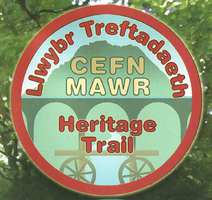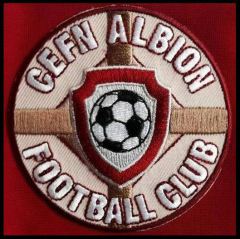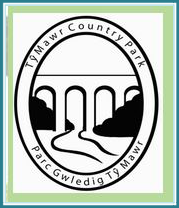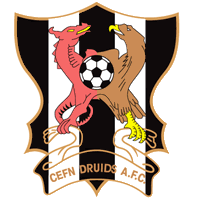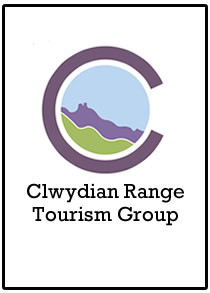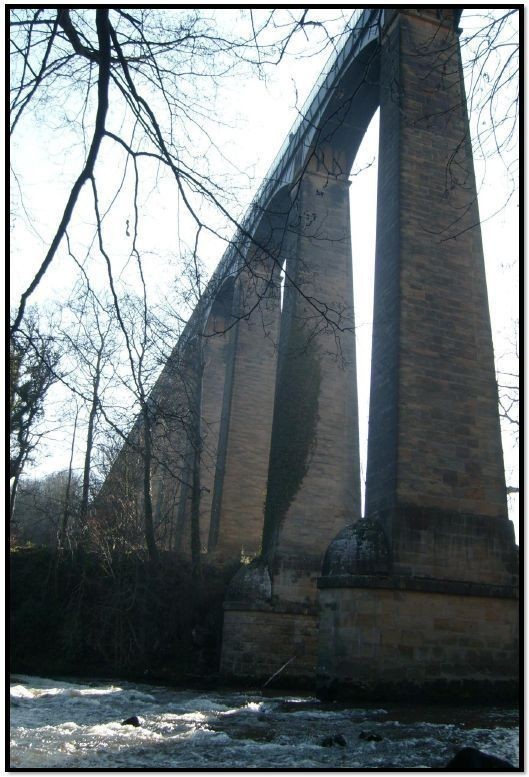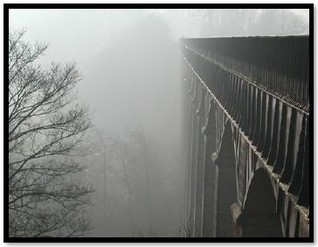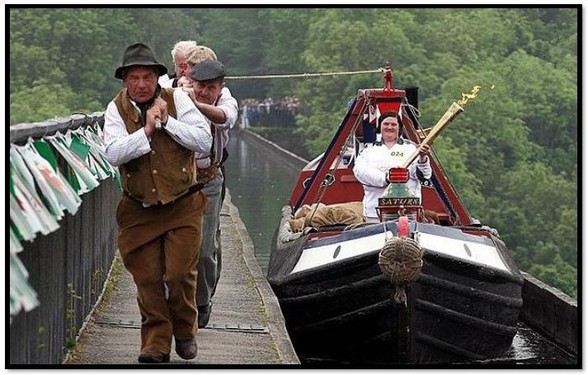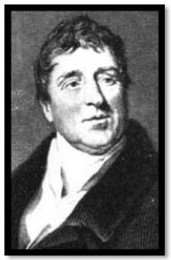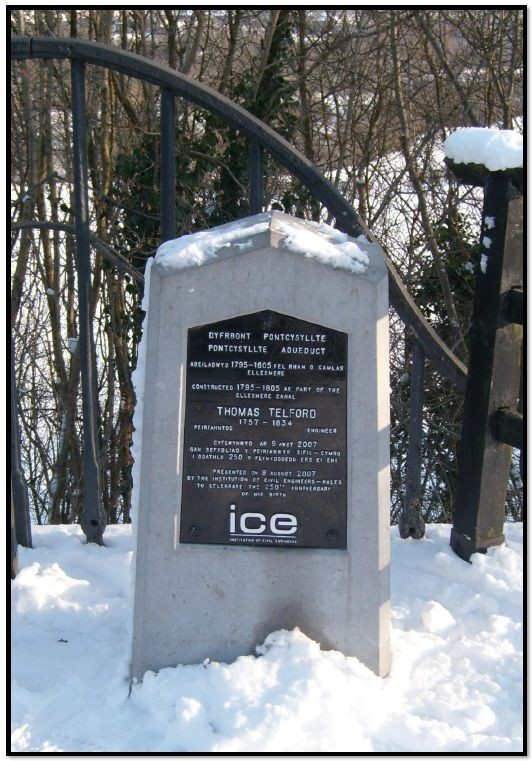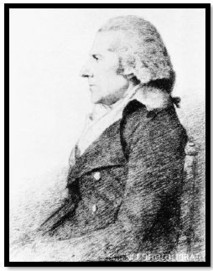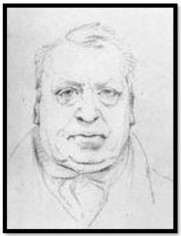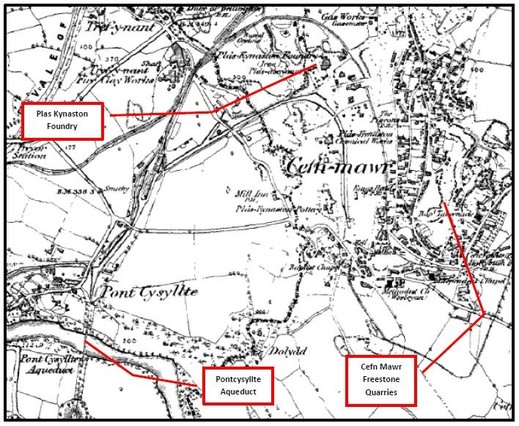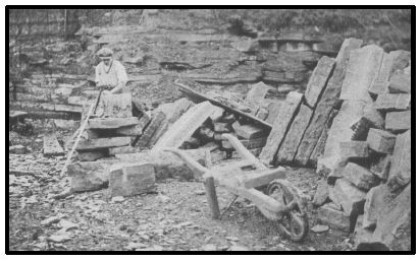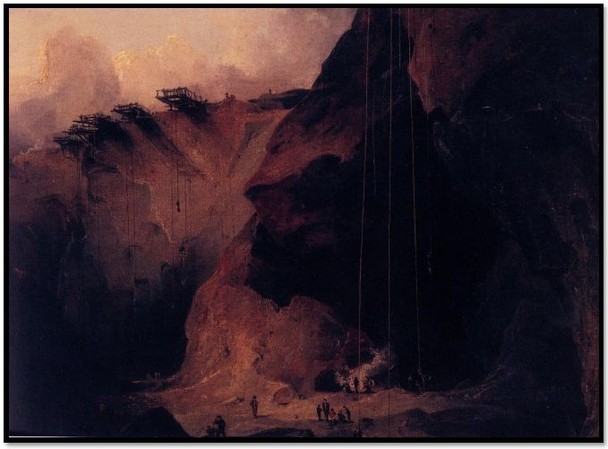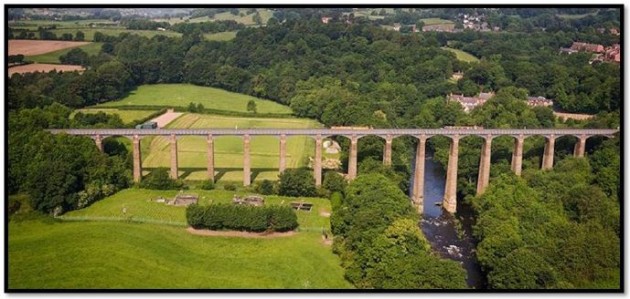Pontcysyllte Aqueduct & Cefn Mawr
The Pontcysyllte Aqueduct
The Pontcysyllte Aqueduct carries the Llangollen Canal over the valley of the River Dee and is both the longest and highest aqueduct in Britain. The Pontcysyllte Aqueduct is a Grade I Listed Structure and received World Heritage Site inscription in 2009.
Construction of the Pontcysyllte Aqueduct started on the 25th of July 1795 with the laying of the first foot stone in the cofferdams built on the River Dee Bed and continued under charge of Thomas Telford as Supervising Engineer & William Jessop as Telford’s Boss with William “Merlin” Hazeldine, joining later as the Ironmaster. The Pontcysyllte Aqueduct is 1,007 ft long and although the navigable channel is only 7 feet wide, the water trough is 12 feet wide with a cantilevered towpath. This arrangement prevents boats from piling up water ahead of them as they move forward through the trough while also providing a balanced weight loading on the supporting piers.
The Pontcysyllte Aqueduct consists of a cast iron trough supported 126 feet above the River Dee by 19 hollow, tapering masonry piers. The trough is constructed from flanged cast iron panels held together and supported by cast iron arches with a span of 45 feet, each casting dovetailing into the next. To seal the ironwork, the joints were caulked with Welsh flannel dipped in boiling sugar and ox blood, and then sealed with lead. The ironwork for the trough was supplied locally by William “Merlin” Hazeldine from his Plas Kynaston Iron Foundry in Cefn Mawr. The sand stone for the piers was quarried locally in the Freestone Quarries of Cefn Mawr and transported to site via a network of horse drawn railways giving Cefn Mawr some of its distinctive features that are still present today.
Part of what was originally called the Ellesmere Canal, it is one of the first major feats of civil engineering undertaken by the civil engineer Thomas Telford who was supervised by the more experienced canal engineer, William Jessop. In turn the construction of the Pontcysyllte Aqueduct, which was at the forefront of civil engineering during the turn on the 19th century, lead to Thomas Telford’s recognition and subsequent appointments, in many other major civil engineering projects. The construction of the Pontcysyllte Aqueduct took 10 years to complete and cost £47,000. It was also a matter of great pride to Telford that only one man lost his life in this extraordinary enterprise and the aqueduct was opened on 26th November 1805, in the presence of some 8,000 people.
The Pontcysyllte Aqueduct also marked a very important and fundamental change in cutting edge technology at the time, i.e. the move to using manmade materials (iron) for large scale construction. This was truly a world first, much more so than Iron Bridge, as it actually had to hold water as a matter of course; furthermore it is a dam sight bigger! This was what gained Thomas Telford and William Hazeldine the recognition they deserved.
Thomas Telford
Telford 1757 - 1834 was involved in the construction of many roads and bridges. From the masonry bridges along the highland roads to iron bridges including the Chirk and Pontcysyllte Aqueducts. Telford's designs have a beauty that expresses his understanding and knowledge of architecture.
His innovative nature pushed Telford to experiment with cast iron and Buildwas Bridge, completed in 1796, was probably the second major iron bridge in Britain. It was modelled on the principles of timber rather than masonry construction, to make a lighter-weight bridge that puts less stress on its foundations than other early bridges whose designers had used masonry principles such as that of Iron Bridge.
This use of iron lead to the partnership between Telford and Hazeldine on many projects such as the Pontcysyllte Aqueduct and the Meni Suspension Bridge which are generally regarded as his finest pieces of work. Stonemason, architect, engineer and designer of numerous bridges, roads and engineering works including the Caledonian Canal and the Conway Suspension Bridge, he was appointed "General Agent, Surveyor, Engineer, and Architect” during his career. He was a founder member of ICE, the Institute of Civil Engineers and the Pontcysyllte Aqueduct made Thomas Telford famous. He was recognised in his lifetime as the greatest builder of iron bridges and canals, of his time and became, the first president of the Institution of Civil Engineers in London in 1825.
William Jessop
William Jessop 1745 to 1814, a Civil Engineer, he is best known for his work on canals, harbours and early horse drawn railways of the late 18th and early 19th centuries.
In 1790 a small group were busy tackling the problem of how best to link the River Mersey at Netherpool, the River Dee at Chester and the River Severn at Shrewsbury. After due consideration they proposed two viable routes: a western scheme which involved a 1,235 yard tunnel at Chirk and an eastern scheme which veered off from the Chester Canal at Tattershall. This option avoided the Dee Valley and would not have required an aqueduct at all. William Jessop, a well-respected canal engineer, was engaged to choose between the two and in due course Jessop submitted a report recommending the western route with an aqueducts crossing the Ceiriog and Dee Valleys to allow access to the rich coal, iron and lime reserves, at Chirk, Plas Kynaston, Trevor, Cefn, Ruabon and Bersham. The Ellesmere Canal Company required an engineer, but since Jessop’s talents were in high demand throughout the country, he was unable to personally supervise the construction. Therefore the committee advertised for a supervising engineer which resulted in Thomas Telford being duly appointed under the guidance of William Jessop initially as General Agent.
Mr William “Merlin” Hazeldine
1763 to 1840, he was a pioneering Ironmaster whose talent for casting structural ironwork helped to realize the designs of engineers such as Thomas Telford and architects including Henry Goodridge and Charles Bage. Hazledine's expertise in manufacturing and testing large iron castings was critical to the success of these pioneering projects. Hazledine grew up in a rural setting and was trained as a millwright. Through a family connection, he took a senior position in a local forge and later set up in business with a partner. After that partnership was dissolved, Hazledine set up a number of foundries supplying large structural castings, notably at Coleham and Plas Kynaston, Cefn Mawr. In their time, these foundries were among the most important and technologically advanced centres for iron-bridge building expertise in Britain. The Plas Kynaston Iron Foundry at Cefn Mawr used the latest form of steam power, developed by James Watt, the Beam Engine, to power its bellows and shingling hammer. This allowed Hazeldine to build the foundry at the same level as the canal, some 130 feet above the level of the River Dee, rather than as in previous foundries and forges which had to be sited by rivers for a power source. The term “Merlin” is a nickname of respect for his almost magical abilities for working with iron at the time.
This 1873 Ordnance survey edition shows where the main components for the construction of the Pontcysyllte Aqueduct where, i.e. the Free Stone Quarries of Cefn Mawr where the stone was once quarried, cut, carved and dressed to size before transport to site, that being the River Dee Valley floor some 300 feet down hill and just under one mile away to the far side of the valley.
Cefn Stone has been worked from early times and examples of Cefn freestone may be seen at Valle Crucis Abbey, in the narrow door surrounds as well as in the basses and capitals of the columns. At Castell Dinas Bran, a similar use of Cefn freestone can be seen, which again is repeated at Chirk Castle, and in the large houses of the area such as Wynnstay and Erdig Halls. Further afield other examples of Cefn freestone can be found in St Georges Hall, Liverpool and the Walker Art Gallery. However the two finest examples of Cefn freestone are locally at Cefn Mawr, the Pontcysytllte Aqueduct and Cefn Viaduct crossing the River Dee.
An Artists depiction of the Freestone Quarry of Cefn Mawr cut into what was called the Cape of Kynaston in the late 1700’s. The quarry is now called Tyn-y-Craig Quarry of Cefn Mawr where the stone for the Pontcysyllte Aqueduct was once quarried from. It was necessary to dig deep into the outcrop to reach the good quality stone with a high quartz content that has stood the test of time.
Pontcysyllte Aqueduct, quarried and made locally at Cefn Mawr over 200 years ago, truly made in Great Britain, if we could do it then, we can do it now, lets get to it, lets do it.
Also see WCBC website for the Pontcysyllte Aqueduct: www.pontcysyllte-aqueduct.co.uk
Please feel free to print our page of the Pontcysyllte Aqueduct and use it as you like, all the best from the PKC Group
Pontcysyllte Aqueduct and Cefn Mawr.pdf
Adobe Acrobat document [1.9 MB]


